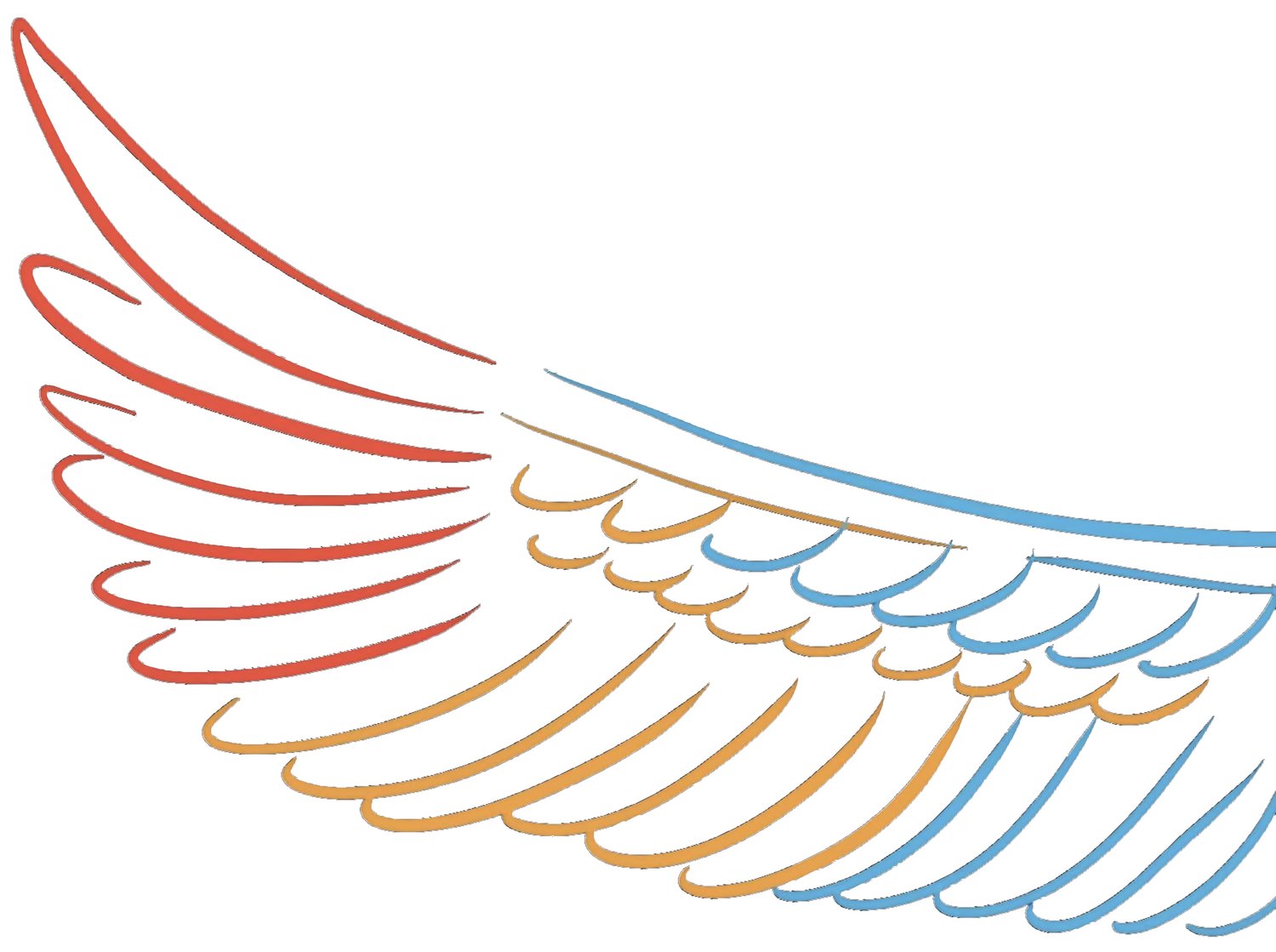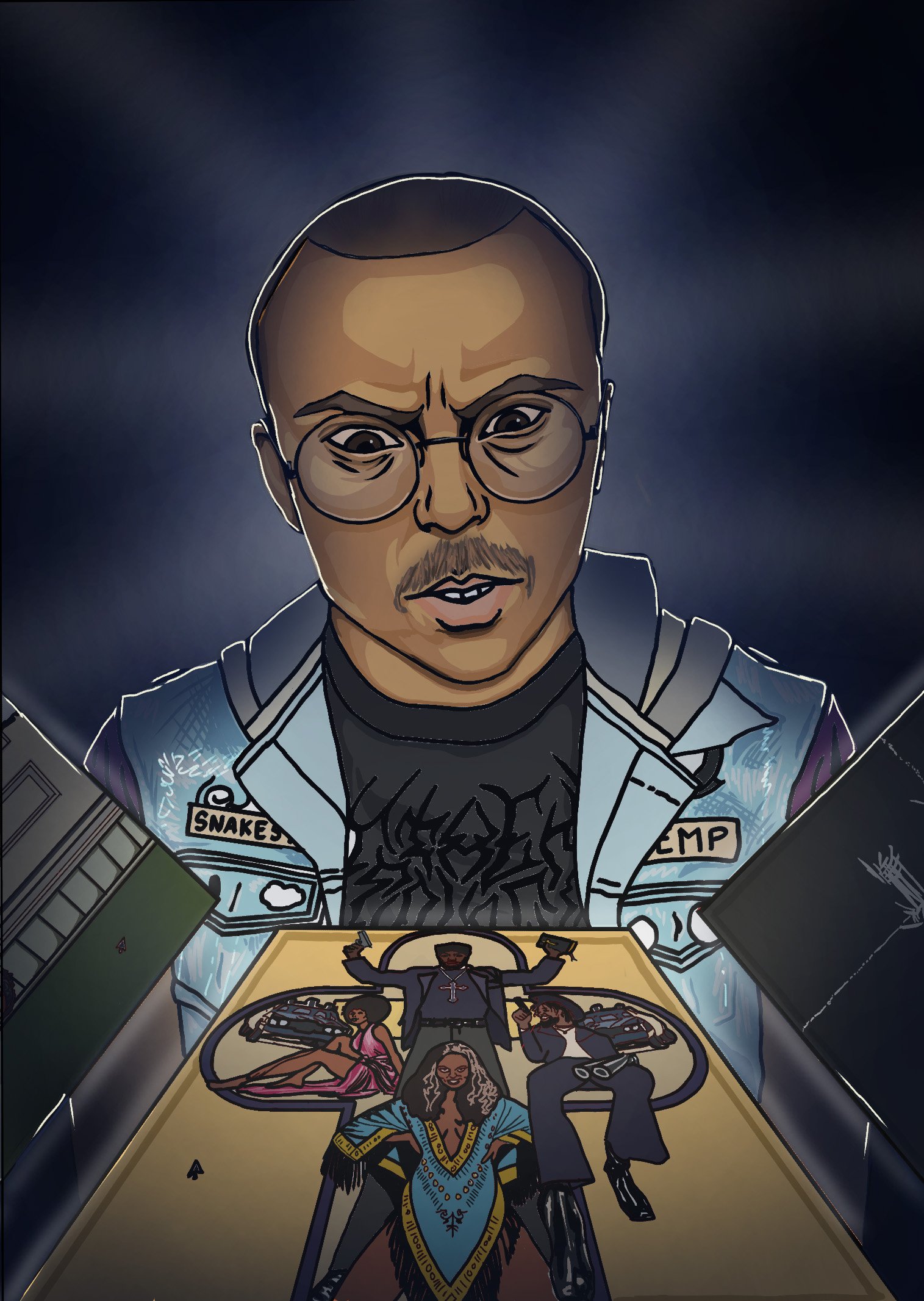Did Fantano gentrify industrial rap?
This and other questions raised by the internet’s busiest music cult.
art by Eliana Schiller.
Anthony Fantano’s impact on the online music community is hard to ignore: for one, his take on Kanye West’s My Beautiful Dark Twisted Fantasy has been a frequent topic of debate for years now. During his ascension to recognition as the internet’s biggest music critic, his iconic flannel shirts and shiny bald head have become synonymous with pointed, critical music reviews. With millions subscribed to his YouTube channel “TheNeedleDrop,” Fantano has been able to give rising artists levels of exposure nearly impossible to achieve through self-promotion alone. His influence has extended to particular songs, artists, and in this case, an entire genre.
Industrial rap is a lesser-known subgenre of hip hop with an emphasis on counterculture, utilizing thrashing sound palettes and grainy, dirty vocal cuts far from that of the mainstream.
Ironically, industrial rap has seemed to maintain its hallmark nonconformist sound, even as the overall concept of a “genre” has become more abstract. Fantano has reviewed plenty of artists in this lane, including Danny Brown, clipping., and Backxwash. Thus, the genre has been able to reach audiences far removed from its originally metal-adjacent underground roots. This begs the question: are Fantano’s viewers the eyes that these creators want on their music, or even on the genre at large?
In January 2018, Barrington Devaughn Hendricks released Veteran, his second album under the JPEGMAFIA moniker. The title was an allusion to his time served in the US Air Force, a source of fuel for the release’s politically charged lyrical content. Always with his ear to the wall of the hip hop underground, Fantano was quick to discover the album, adorning it with a glowing 8/10 score in his review video. In a matter of weeks, Fantano’s review had more views than any of JPEG’s songs. Now, JPEG is regarded as a masterful producer at the forefront of the developing industrial rap scene. Fantano effectively “blew up” JPEG, giving his career the first mainstream media attention it had ever seen.
This type of instant growth was rare for an independent artist in 2018, and is even harder to come by in 2024. At face value, JPEG’s success story is any starving artist’s dream, and in some ways, it was JPEG’s as well—despite attention not being his main objective, he has expressed gratitude for having ears on his music on multiple occasions. Still, he hasn’t shied away from openly sharing his gripes with his overnight fanbase, comprising of the same white, dissective music aficionados that make up much of Fantano’s community. In an interview with No Jumper, JPEG discusses how he sees his following as a “50/50” between self-hating white people who claim to agree with his sociopolitical views, and those who are simply fans of his off-kilter sound.
Aside from just the demographics of Fantano and adjacent artists’ audiences, there is also a bit of dissonance between JPEGMAFIA and his fans. He found himself at odds with his listeners regarding his controversial decision to work with Kanye West in one of several now-deleted tweets from late January:
photo from X.
It’s hard to say whether the “chronically online” behavioral archetype that JPEG speaks to is a product of Fantano specifically, but there’s more that suggests there is an alignment between the two. The duo Death Grips were first reviewed by Fantano in 2012, given a 10/10 for their album The Money Store. In recent times, these industrial rap pioneers and their initial fanbase of middle-aged horrorcore prog-rockers have had issues assimilating with younger, Internet-savvy concertgoers. A number of particularly juvenile incidents have arisen on Death Grips’ most recent tour, including them walking off the stage after objects were thrown at MC Ride in Arkansas, as well as someone allegedly urinating on the floor at their Philadelphia show.
A long-time Death Grips fan had this to say about the regression of their general audience:
The hypothesis that the attention-grabbing meta of the contemporary internet is causing disruptive outbursts at concerts checks out. Not only that, but young adults who were funneled into the mature concert scene via Fantano post-COVID may also be less acquainted with social norms and concert courtesy in these spaces, resulting in incidents like these.
From the radio single to the TikTok hit, artists have rarely been able to control how and when they achieve fame—much less have they been able to pick and choose their fans. The early-2000’s dissemination of rap into Middle America, with Eminem at the forefront, is a perfect example of this. Once the public gets a hold of a musical niche, it can be misconstrued to a point where the perspectives and values of the artists are completely opposite the misunderstanding listener, which, as we’ve seen, can rise to the point of fan resentment and concert misconduct. While Fantano should not be blamed individually for the behavior he has indirectly cultivated within the biosphere of experimental hip hop, it is ironic how far his influence might stray away from his personal thesis of simply elevating the music and the artists he enjoys.
edited by Anant Dhingra.
art by Eliana Schiller.


